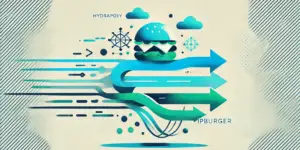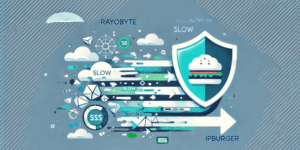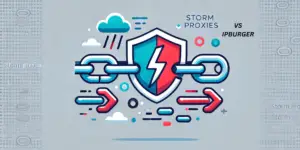Khái niệm chặn web đã xuất hiện khá lâu và đó là một thực tế mà nhiều quốc gia đang sử dụng. Nhưng nó thực sự có nghĩa là gì, và làm thế nào nó có thể tránh được bởi người dùng Internet thông thường?
Chặn web là gì?
Web blocking is a practice that is present in a lot of countries, and it includes various techniques that these countries’ ISPs (Internet Service Providers) are using to limit their users’ reach online. By using a combination of data feeds by various companies dedicated to content control, as well as that of government agencies, and forced by court orders, ISPs are basically blocking various websites and content that is available online.
Lý do chặn các trang web rất nhiều và chúng có thể khác nhau giữa các quốc gia. Thường xuyên hơn không, nội dung bị chặn bao gồm nội dung khiêu dâm, nội dung có bản quyền, trang web độc hại, bộ lọc được ISP giới thiệu theo mặc định, nội dung giáo dục (trong một số trường hợp), nội dung công ty, mối đe dọa kỹ thuật, tài liệu cực đoan, trang web bị chính phủ đưa vào danh sách đen và tương tự. Các trang web bao gồm hận thù chủng tộc và tôn giáo cũng đã bị xóa, nhưng cũng có nhiều trang web hack khác nhau, v.v.
To block and filter these websites, the ISPs and the government agencies use a wide range of methods. Those include IP address blocking, DNS hijacking and/or blocking, as well as Deep packet inspections.
Đương nhiên, chặn nội dung là một vấn đề rất gây tranh cãi và phức tạp. Từ chối truy cập vào nội dung trực tuyến có thể được coi là vi phạm quyền kỹ thuật số của người dùng bởi các tổ chức đấu tranh tự do. Tuy nhiên, thậm chí họ còn nhìn thấy những lợi ích tiềm năng trong việc chặn các tài liệu nguy hiểm và các trang web độc hại có thể gây hại trực tiếp cho người dùng hoặc dẫn đến gây hại cho người khác.
Chưa kể đến các vấn đề quan trọng khác, như tình dục hóa trẻ em, đã buộc rất nhiều người phải thay đổi suy nghĩ về việc chặn web và bắt đầu xem xét nó từ quan điểm thuận lợi hơn.
Tuy nhiên, sự phát triển của internet đã tìm ra cách để đối phó với các khối và bộ lọc này, và giờ đây có thể bỏ qua chúng cho khá nhiều người, bất kể họ có hiểu biết về công nghệ hay không.
Làm thế nào để truy cập web một cách tự do?
As mentioned, there are a lot of countries around the world that are practising web blocking, with only a handful of them that are not. Some of these countries are blocking only what is deemed necessary for the protection of the users. Others, however, have started doing it for different purposes too. The concept has even led to repression of information in some extreme cases, like North Korea, and alike.
Vương quốc Anh cho đến ngày nay vẫn là một trong những quốc gia phát triển nhất tiếp tục ủng hộ việc chặn web và một số người tin rằng họ đang sử dụng tính năng này nhiều hơn những gì cần thiết. Ngoài ra, Vương quốc Anh không chỉ chặn công dân của họ truy cập các trang web khác nhau mà còn chặn bên ngoài, nơi rất nhiều nội dung của họ chỉ có sẵn cho công dân của đất nước.
Still, the internet consists of many talented individuals that have developed various methods of bypassing the blocks, and those include different tools that are available online. Things like proxies, VPNs, and anonymous browsers like Tor started popping up all over the internet in the last decade.
These are the tools that allow users to hide or change their IP address in order to confuse the ISP’s systems regarding their locations. The IP address blocking has a pretty similar concept. Various websites are blocked by the ISPs, but only for those IP addresses that they themselves are issuing. If the user connects to a server in a country that is not blocking a specific website, they will be given a new IP address, one that has access to that specific website.
That way, the block is bypassed, and the users will be granted access to the content blocked by their own ISP. Proxies work in a slightly different way, and most of them will only hide the user’s real IP. They also come as a more economical option, but VPNs are much safer to use since they provide a much larger level of privacy and online anonymity. Not to mention that most of the good ones do not record users’ browsing history, and even if they do, they are not connecting it to the specific user, but are instead using it to better their technology.
Đương nhiên, người dùng cần cẩn thận khi sử dụng công nghệ này và tránh các dịch vụ miễn phí luôn là lựa chọn tốt nhất vì họ có thể bán lịch sử duyệt web này cho bên thứ ba.
Đối với các trình duyệt ẩn danh như Tor, chúng cũng là một lựa chọn phù hợp nhưng đi kèm với những hạn chế riêng. Vấn đề lớn nhất với Tor là luồng dữ liệu chậm, khiến bạn không thể tải xuống nội dung hoặc xem video thông qua trình duyệt này. Tuy nhiên, Tor cũng có rất nhiều lợi thế, một trong số đó là nó cho phép truy cập vào deep web và giữ thông tin của người dùng ở chế độ riêng tư.
Methods of bypassing blocks and accessing the full potential of the internet are many, but the users need to remember that caution is always the top priority. The use of these methods is not illegal, but it is frowned upon in many countries, which might lead to government agencies contacting the VPN providers and asking for your information if you are detected as a VPN user. Some VPNs reserve the right to provide that info if asked to do so, so keep that in mind as well.



